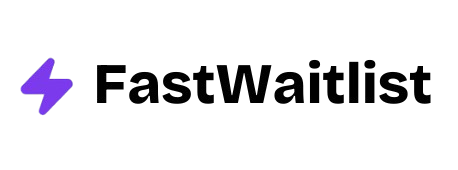
Product-market fit is a crucial concept for startups and businesses aiming for success. It occurs when a company's product or service meets a real market need and satisfies customers. This guide will explore what product-market fit means, why it's important, how to achieve it, and ways to measure it. We'll also look at signs of strong product-market fit and strategies for improvement.
Understanding Product-Market Fit
Definition and Concept
Product-market fit is about creating something people want and are willing to pay for. Marc Andreessen, co-founder of Andreessen Horowitz, famously described it as "being in a good market with a product that can satisfy that market."
At its core, product-market fit happens when:
- Your product solves a real problem
- Customers are eager to buy and use it
- The market is large enough to support business growth
Achieving product-market fit isn't a one-time event. It's an ongoing process that requires constant attention and adjustment as markets and customer needs change.
Why Product-Market Fit Matters
Product-market fit is the foundation for business success. Without it, even the most innovative ideas can fail. Here's why it's so important:
-
Sustainable growth: When you have product-market fit, customer acquisition becomes easier and more cost-effective. People are more likely to recommend your product, leading to organic growth.
-
Efficient resource use: Startups often have limited resources. Product-market fit helps ensure you're investing time and money in the right areas.
-
Investor attraction: Investors are more likely to fund businesses that have proven product-market fit. It shows there's real demand for what you're offering.
-
Competitive advantage: Strong product-market fit can set you apart from competitors and make it harder for new entrants to gain traction.
Common Misconceptions
There are several misconceptions about product-market fit that can lead startups astray:
-
It's all about features: While features are important, product-market fit is more about solving customer problems in a way that resonates with them.
-
Once achieved, it's permanent: Markets and customer needs evolve. What works today might not work tomorrow. Continuous adaptation is key.
-
It happens overnight: Achieving product-market fit often takes time, experimentation, and multiple iterations.
The Journey to Product-Market Fit
Steps to Achieve Product-Market Fit
Finding product-market fit is a process that requires careful planning and execution. Here are the key steps:
-
Define your target customer: Start by creating detailed buyer personas. Understand their demographics, behaviors, pain points, and goals.
-
Identify underserved customer needs: Look for gaps in the market where customer needs aren't being met fully. This could be your opportunity.
-
Develop your value proposition: Clearly articulate how your product solves customer problems better than existing solutions.
-
Create a Minimum Viable Product (MVP): Build a basic version of your product with just enough features to satisfy early customers and provide feedback for future development.
-
Test and iterate based on feedback: Launch your MVP to a small group of users. Gather feedback and use it to improve your product.
Challenges in Finding Product-Market Fit
The path to product-market fit is rarely smooth. Here are some common challenges:
-
Balancing vision with market demands: Entrepreneurs often have a strong vision for their product. But it's crucial to be flexible and adapt based on market feedback.
-
Identifying the right market: Sometimes, the initial target market isn't the best fit. Be prepared to pivot if necessary.
-
Scaling too quickly: Premature scaling before achieving product-market fit can lead to wasted resources and missed opportunities.
Case Studies of Successful Product-Market Fit
Let's look at two companies that successfully found and maintained product-market fit:
-
Netflix: Netflix started as a DVD-by-mail rental service, competing with brick-and-mortar stores. As technology evolved, they pivoted to streaming, then to producing original content. Each move was in response to changing market needs and technological advancements.
-
Slack: Slack began as an internal tool for a gaming company. The team realized their communication tool was more valuable than the game they were developing. They pivoted, focusing on the tool that became Slack, which filled a significant need in workplace communication.

Measuring Product-Market Fit
Quantitative Metrics
Several key metrics can help you gauge product-market fit:
-
Customer Acquisition Cost (CAC): This is how much it costs to acquire a new customer. A decreasing CAC often indicates improving product-market fit.
-
Customer Lifetime Value (LTV): This represents the total revenue a business can expect from a single customer account. A high LTV relative to CAC suggests strong product-market fit.
-
Churn Rate: This is the percentage of customers who stop using your product over a given period. Low churn rates often indicate good product-market fit.
-
Net Promoter Score (NPS): This measures customer satisfaction and loyalty. A high NPS can be a sign of strong product-market fit.
Qualitative Indicators
Numbers don't tell the whole story. Look for these qualitative signs as well:
-
Customer feedback: Are customers enthusiastic about your product? Do they find it indispensable?
-
Word-of-mouth referrals: Are customers actively recommending your product to others?
-
User engagement: Are customers using your product regularly and engaging with multiple features?
The Sean Ellis Test
Sean Ellis, who coined the term "growth hacking," proposed a simple test for product-market fit. Ask your customers: "How would you feel if you could no longer use the product?" If over 40% say they would be "very disappointed," you've likely achieved product-market fit.
To conduct the test:
- Survey your customers who have used your product at least twice in the last two weeks.
- Ask the question above and provide four options: Very disappointed, Somewhat disappointed, Not disappointed, N/A - I no longer use the product.
- Calculate the percentage who answered "Very disappointed."
This test provides a quick, actionable insight into how much your product resonates with users.
Signs of Strong Product-Market Fit
When you've achieved strong product-market fit, several positive indicators emerge:
Rapid Organic Growth
One of the clearest signs of product-market fit is rapid organic growth. When customers find your product valuable, they naturally spread the word. This leads to:
- High referral rates
- Increased word-of-mouth marketing
- Lower customer acquisition costs
If you're seeing steady growth without heavy marketing spend, it's a good sign you're on the right track.
High Customer Retention Rates
Customers who find value in your product are likely to stick around. Look for:
- Low churn rates
- High renewal rates for subscription-based products
- Increasing usage over time
High retention rates indicate that your product is meeting ongoing customer needs effectively.
Positive Unit Economics
When you've found product-market fit, your business model should start to make financial sense. Key indicators include:
- Customer Lifetime Value (LTV) significantly higher than Customer Acquisition Cost (CAC)
- Decreasing CAC over time
- Increasing revenue per customer
These metrics show that you're not just acquiring customers, but doing so profitably.
Enthusiastic Customer Testimonials
Happy customers are often eager to share their experiences. Look for:
- Unsolicited positive reviews
- Customers willing to act as references
- Case studies showcasing significant impact
When customers become advocates for your product, it's a strong sign of product-market fit.
Increasing Market Share
As your product gains traction, you should see your market share grow. This might manifest as:
- Gaining customers from competitors
- Expanding into new market segments
- Becoming a recognized name in your industry
Entrepreneurs can validate their product ideas and gauge market interest by creating a waitlist page on FastWaitlist. This tool helps assess initial demand and collect valuable feedback from potential early adopters.
Signs You Haven't Reached Product-Market Fit
Recognizing when you haven't achieved product-market fit is just as important as identifying when you have. Here are key indicators that suggest you might not be there yet:
High Churn Rates
If customers are leaving faster than you can acquire them, it's a red flag. High churn rates often indicate:
- The product isn't solving a significant problem
- The solution isn't effective enough
- There are better alternatives available
Regularly analyze your churn rates and, more importantly, conduct exit interviews to understand why customers are leaving.
Slow or Stagnant Growth
Product-market fit typically leads to steady, often rapid growth. If you're seeing:
- Flat or declining user numbers
- Difficulty in attracting new customers
- Decreasing engagement from existing users
These could be signs that your product isn't resonating with the market as strongly as it should.
Difficulty in Customer Acquisition
When you have product-market fit, customer acquisition becomes easier over time. If you're experiencing:
- Consistently high customer acquisition costs
- Low conversion rates from trials or demos
- Lack of word-of-mouth referrals
It might indicate that your product isn't compelling enough for the market you're targeting.
Lack of Customer Enthusiasm
Customers who have found a product that truly fits their needs are often enthusiastic about it. If you're not seeing:
- Positive unsolicited feedback
- Customers eagerly sharing their experiences
- High engagement rates with your product
It could mean your product isn't delivering enough value to generate excitement.
Constant Pivoting or Major Product Changes
While iteration is normal, constant major changes can be a sign of trouble. If you find yourself:
- Frequently changing your core value proposition
- Pivoting to entirely new markets or use cases
- Constantly adding features without clear direction
These could indicate that you haven't yet found the right fit between your product and the market.
Strategies for Improving Product-Market Fit
If you've identified that you haven't yet achieved product-market fit, don't worry. There are several strategies you can employ to improve your position:
Continuous Customer Feedback Loops
Establishing ongoing communication with your customers is crucial. This involves:
- Regular surveys to gauge satisfaction and gather ideas
- In-depth interviews with both satisfied and dissatisfied customers
- Monitoring social media and review sites for unsolicited feedback
Use this feedback to inform your product development and marketing strategies. Remember, your customers often have the best insights into how your product can improve.
Iterative Product Development
Adopt an agile approach to product development. This means:
- Releasing updates frequently
- A/B testing new features
- Being willing to remove features that aren't adding value
This approach allows you to respond quickly to customer needs and market changes.
Market Research and Competitor Analysis
Stay informed about your market and competition. Regularly:
- Conduct market research to understand trends and changes
- Analyze competitor offerings and strategies
- Identify gaps in the market that you can fill
This information can help you position your product more effectively and identify new opportunities for differentiation.
Focusing on Core Value Proposition
Sometimes, in the quest for product-market fit, companies lose sight of their core value proposition. To avoid this:
- Clearly define what makes your product unique
- Ensure all features and marketing align with this core value
- Be willing to say no to features or opportunities that don't support your main value proposition
By staying focused, you can create a more compelling and coherent product offering.

FastWaitlist can help SaaS founders and small business owners engage potential customers and grow their email lists without coding, aiding in product-market fit assessment. By creating a waitlist, you can gauge interest in your product idea and collect valuable feedback before full development.
Beyond Product-Market Fit
Achieving product-market fit is a significant milestone, but it's not the end of the journey. Here's what comes next:
Scaling Your Business
Once you've found product-market fit, it's time to grow. This involves:
- Expanding your marketing efforts
- Hiring to support growth
- Improving operational efficiency to handle increased demand
Remember, scaling too quickly can be as dangerous as not scaling at all. Grow at a pace that allows you to maintain quality and customer satisfaction.
Maintaining Fit as Markets Evolve
Markets are dynamic, and what constitutes a good fit can change over time. To maintain product-market fit:
- Continue gathering and acting on customer feedback
- Stay attuned to market trends and shifts
- Be prepared to evolve your product as needed
Successful companies often reinvent themselves multiple times to stay relevant.
Expanding into New Markets or Segments
Once you've mastered one market, you might consider expanding. This could mean:
- Targeting new customer segments
- Expanding geographically
- Developing new products for your existing customer base
Each of these moves requires finding product-market fit all over again, so approach them with the same rigor as your initial efforts.
Product-market fit is not a destination, but a journey of continuous improvement and adaptation. By staying close to your customers, remaining flexible, and focusing on delivering real value, you can achieve and maintain product-market fit, setting your startup on the path to long-term success.
Remember, the key is to solve real problems for real people in a way that's meaningfully better than existing solutions. Keep listening, keep iterating, and keep striving to create something truly valuable for your customers.
